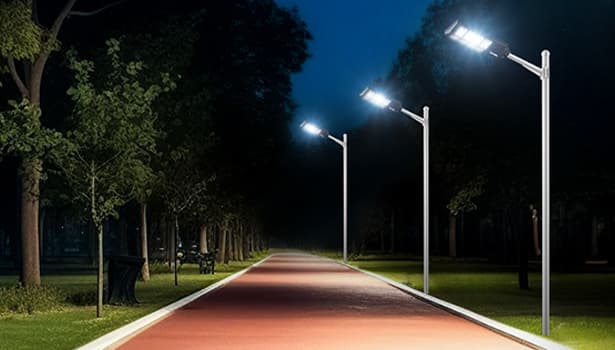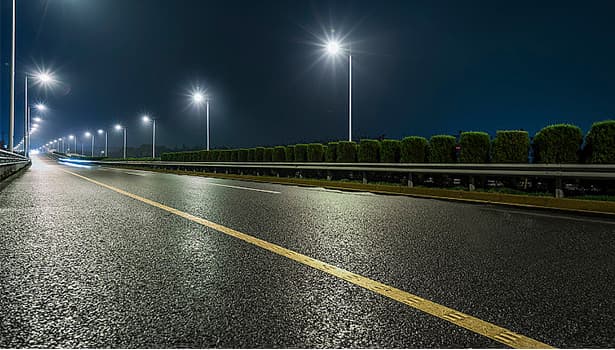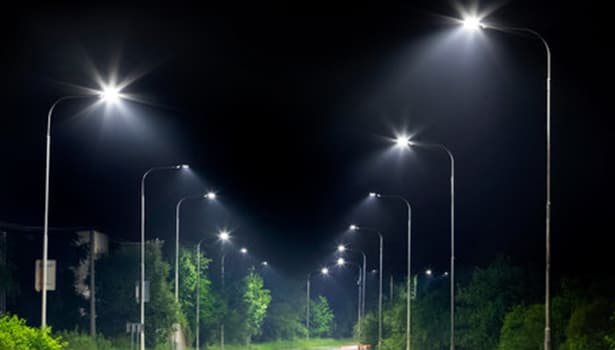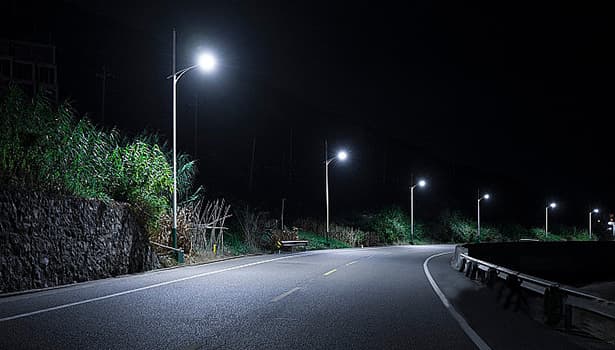How to Get Your Solar Street Lights Working Again?
Dec 24, 2024
Solar street lights are an environmentally friendly and efficient green lighting solution that provides sufficient nighttime lighting for thousands of streets and improves the safety of nighttime travel. As a lighting device, solar LED street lights are prone to occasional malfunctions during operation. Most of the faults can be solved by themselves, and the streetlights will be able to resume operation soon. If you encounter problems that cannot be solved, please contact the streetlight supplier in time. So when your solar-powered street lights cannot work normally, how do you get your solar street light working again?

* Check whether there is dirt or debris on the solar panels, such as bird droppings, dust, fallen leaves, etc. These things accumulate on the panels and affect the charging efficiency. You can use a soft cloth or mild soapy water to gently wipe the obstacles on the solar panels that have been removed.
* Check whether there are shadows cast by tall trees or buildings around the solar panels, which affect the charging efficiency. You can regularly trim trees to avoid obstruction or adjust the angle of the solar panel. If you cannot trim or handle it, it is recommended to relocate the solar street light to an unobstructed position to ensure maximum sunlight reception.
* The service life of the battery is limited, and the number of times it can be charged and discharged during its life cycle is also limited. If your battery has been used for 3-5 years, you can consider replacing it with a new battery.
* If you are in an area where it is rainy for a long time, the battery may not be charged enough, and the solar street light will not be able to operate without sufficient energy. At this time, you can use a backup power supply or fully charge the battery on a sunny day.

* The life of LED lamp beads can generally reach more than 50,000 hours, but due to long-term use or exposure to voltage fluctuations, LEDs may burn out over time, and you need to replace the damaged LED components.
* Loose wires or poor contact will cause the LED light source to not emit light normally. You need to check whether all wiring and connectors are firm and secure.
* If your solar-powered outdoor street light is on during the day or not at night, the controller may be faulty, and you need to reset the controller or replace it.
* If your solar powered street light does not run according to the time or brightness you set, it may be set incorrectly. You can refer to the user manual to reset the controller.

* If your area has experienced long periods of rain, snow, sandstorms, haze, and other severe weather, which will affect the normal operation of solar streetlights, you can wait until the weather conditions improve to check the operation of the streetlights or prepare a backup charging system to maintain the normal operation of the streetlights.
* Whether it is extremely high or extremely low temperatures, the impact on batteries is very large. If you are in an environment with such extreme temperature differences, you can consider using batteries that perform well in specific climates.

If you want your solar street lights working again, you must first know why they cannot work normally, check each component one by one, and find and solve the problem to resume operation smoothly. If it still cannot operate after inspection and trial, you need to contact your solar LED street light supplier and provide feedback on the problem for help. If you want solar-powered streetlights to work stably for a long time, regular inspection and maintenance are indispensable. During operation, pay attention to their operation so as to find problems in time. Early detection and early treatment are important ways to extend the life of solar powered outdoor street lights.

1. Check the solar panels
Solar panels are important components of solar powered LED street lights. They are responsible for collecting sunlight and converting light energy into electrical energy to prepare sufficient energy for the operation of street lights. If your solar powered outdoor street lights cannot work normally, the first thing to consider may be the problem of solar panels.* Check whether there is dirt or debris on the solar panels, such as bird droppings, dust, fallen leaves, etc. These things accumulate on the panels and affect the charging efficiency. You can use a soft cloth or mild soapy water to gently wipe the obstacles on the solar panels that have been removed.
* Check whether there are shadows cast by tall trees or buildings around the solar panels, which affect the charging efficiency. You can regularly trim trees to avoid obstruction or adjust the angle of the solar panel. If you cannot trim or handle it, it is recommended to relocate the solar street light to an unobstructed position to ensure maximum sunlight reception.
2. Check the battery
The battery of the solar LED street light is an important energy storage device, responsible for storing the electricity generated by the solar panel and powering the solar-powered street light at night. The battery is also one of the parts of the solar streetlight that is prone to failure.* The service life of the battery is limited, and the number of times it can be charged and discharged during its life cycle is also limited. If your battery has been used for 3-5 years, you can consider replacing it with a new battery.
* If you are in an area where it is rainy for a long time, the battery may not be charged enough, and the solar street light will not be able to operate without sufficient energy. At this time, you can use a backup power supply or fully charge the battery on a sunny day.

3. Check the LED light source
Today's solar powered street lights generally use LED lamp beads as the light source. This light source is energy-saving and efficient and is an ideal choice for street lights. The LED light source is the light-emitting unit of the solar-powered LED street light. Once a failure occurs, it needs to be paid attention to and handled in time.* The life of LED lamp beads can generally reach more than 50,000 hours, but due to long-term use or exposure to voltage fluctuations, LEDs may burn out over time, and you need to replace the damaged LED components.
* Loose wires or poor contact will cause the LED light source to not emit light normally. You need to check whether all wiring and connectors are firm and secure.
4. Check the controller
The controller of the solar street light is responsible for regulating the charging and discharging process of the battery to prevent overcharging and over-discharging. If there is a problem with the controller, it may damage the operation of the entire streetlight system.* If your solar-powered outdoor street light is on during the day or not at night, the controller may be faulty, and you need to reset the controller or replace it.
* If your solar powered street light does not run according to the time or brightness you set, it may be set incorrectly. You can refer to the user manual to reset the controller.

5. Evaluate the operating environment
Solar street lights have excellent pressure resistance, waterproofness, corrosion resistance, and other properties, but extreme environments can also affect their normal use.* If your area has experienced long periods of rain, snow, sandstorms, haze, and other severe weather, which will affect the normal operation of solar streetlights, you can wait until the weather conditions improve to check the operation of the streetlights or prepare a backup charging system to maintain the normal operation of the streetlights.
* Whether it is extremely high or extremely low temperatures, the impact on batteries is very large. If you are in an environment with such extreme temperature differences, you can consider using batteries that perform well in specific climates.

If you want your solar street lights working again, you must first know why they cannot work normally, check each component one by one, and find and solve the problem to resume operation smoothly. If it still cannot operate after inspection and trial, you need to contact your solar LED street light supplier and provide feedback on the problem for help. If you want solar-powered streetlights to work stably for a long time, regular inspection and maintenance are indispensable. During operation, pay attention to their operation so as to find problems in time. Early detection and early treatment are important ways to extend the life of solar powered outdoor street lights.




